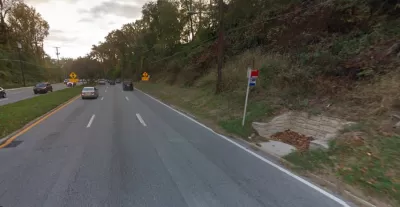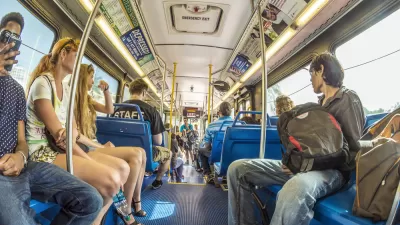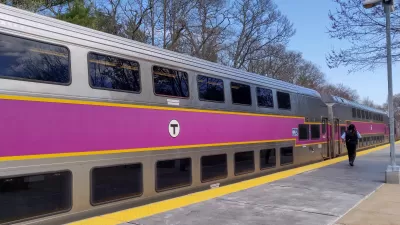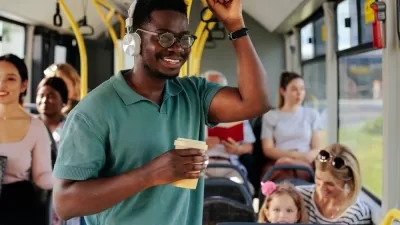The lack of robust public transit networks in many U.S. cities reduces access to opportunity and drives those who can afford it to buy private vehicles.

Before buying a car, writes Dharna Noor in Gizmodo, "I had to plan my life around my carlessness." The improvement in her life after becoming a vehicle owner, Noor writes, made her realize that it shouldn't be that way.
"Cars are dangerous. They constitute one of the largest shares of greenhouse gas emissions of any sector in the U.S., and they also produce toxic pollution like carbon monoxide, nitrogen oxide, and particulate matter," not to mention the 6,000 pedestrians killed by cars every year. Fighting guilt, Noor took the plunge into car ownership. "Immediately, it was like I lived in a different city."
The car opened up new possibilities, and the same holds true in cities across the country. "A 2017 analysis of Census data by Governing found that in nearly every U.S. city, driving to work is much quicker than using a bus or train," encouraging people to drive. Yet "[t]here’s nothing inherently slow about public transit—in fact, when it’s properly designed, it can actually save users hours of their lives." Noor argues that improving public transit would not only reduce carbon emissions but also "ensure everyone has access to opportunity" and increase ridership. "Imagine if access to parks and lakes weren’t limited to those who can afford to buy, maintain, and park their cars. That could go far in improving access for exploited, poor communities who are disproportionately harmed by highway pollution."
FULL STORY: Buying a Car Improved My Life. It Shouldn't Have.

Alabama: Trump Terminates Settlements for Black Communities Harmed By Raw Sewage
Trump deemed the landmark civil rights agreement “illegal DEI and environmental justice policy.”

Planetizen Federal Action Tracker
A weekly monitor of how Trump’s orders and actions are impacting planners and planning in America.

The 120 Year Old Tiny Home Villages That Sheltered San Francisco’s Earthquake Refugees
More than a century ago, San Francisco mobilized to house thousands of residents displaced by the 1906 earthquake. Could their strategy offer a model for the present?

In Both Crashes and Crime, Public Transportation is Far Safer than Driving
Contrary to popular assumptions, public transportation has far lower crash and crime rates than automobile travel. For safer communities, improve and encourage transit travel.

Report: Zoning Reforms Should Complement Nashville’s Ambitious Transit Plan
Without reform, restrictive zoning codes will limit the impact of the city’s planned transit expansion and could exclude some of the residents who depend on transit the most.

Judge Orders Release of Frozen IRA, IIJA Funding
The decision is a victory for environmental groups who charged that freezing funds for critical infrastructure and disaster response programs caused “real and irreparable harm” to communities.
Urban Design for Planners 1: Software Tools
This six-course series explores essential urban design concepts using open source software and equips planners with the tools they need to participate fully in the urban design process.
Planning for Universal Design
Learn the tools for implementing Universal Design in planning regulations.
Clanton & Associates, Inc.
Jessamine County Fiscal Court
Institute for Housing and Urban Development Studies (IHS)
City of Grandview
Harvard GSD Executive Education
Toledo-Lucas County Plan Commissions
Salt Lake City
NYU Wagner Graduate School of Public Service





























